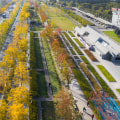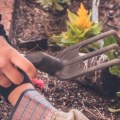Horticulture is a science and art that employs technology to grow plants, grasses, shrubs or trees for human use, according to Michigan State University. It involves growing plants for food, utility, beauty, or recreation. Arboriculture, on the other hand, is the study of trees. An arborist is considered to be a person who studies trees and the proper ways to care for them.
They are also sometimes called tree surgeons. Arborists are needed to assess the condition of trees, make recommendations for their care, and provide services to keep them healthy and thriving for years to come. They have professional knowledge of where to place trees, the correct maintenance needed, and how large they will grow in the next 10 years.
Horticulture
is the art of growing plants in gardens to produce food and medicinal ingredients, or for comfort and ornamental purposes.Horticulturists are farmers who grow flowers, fruits and nuts, vegetables and herbs, as well as ornamental trees and lawns. These activities are often used in a construction of human health that we know as horticultural therapy. Urban parks, gardens and street trees are considered essential to creating a good living environment in communities around the world and are served by the Department of Horticulture in many cities and towns. Horticultural professionals are as diverse as the crops that make up industry and discipline.
They include a wide range of individuals and groups who cultivate, cultivate, cultivate, research, advise and enjoy the abundance of horticultural plants for their nutrition, health benefits and aesthetics. In general, an arborist focuses on individual trees, while someone who manages the health of entire forests is called a forester. A horticulturist is someone who is trained and practices the art and science of growing plants, trees, shrubs and herbs for their beauty or for human consumption. Other ornamental garden plants, such as annual and perennial flowers, ornamental shrubs and trees, are planted in extensive designed landscapes.
The street tree plan, therefore, must be related to the broader context of the urban ecosystem and not just to the individual streets. Bulbs, annuals, herbaceous perennials, and deciduous trees become more frost-resistant with sap fall and are therefore more likely to get through the rest season undamaged. Arborists and horticulturists are related to plants, but their field of study and work differs considerably. A third important consideration for freeing ourselves from decorative horticulture is utilitarian horticulture.
An arborist is someone who is trained in the study of trees and is sometimes referred to as a tree surgeon. Field corn used for animal feed is considered an agricultural crop, while sweet corn is considered a horticultural crop, but they are the same plant species. In the tropics of Asia and parts of Central and South America, the dominant features of gardens are flowering trees, shrubs and climbing plants. However, an entire street or city with diverse planting themes can turn into a strange horticultural experience that leads to urban chaos.
Therefore, when apples are used to make apple pie or yogurt is fortified with fruit, the product can be considered both a horticultural product and a bakery or dairy product.






